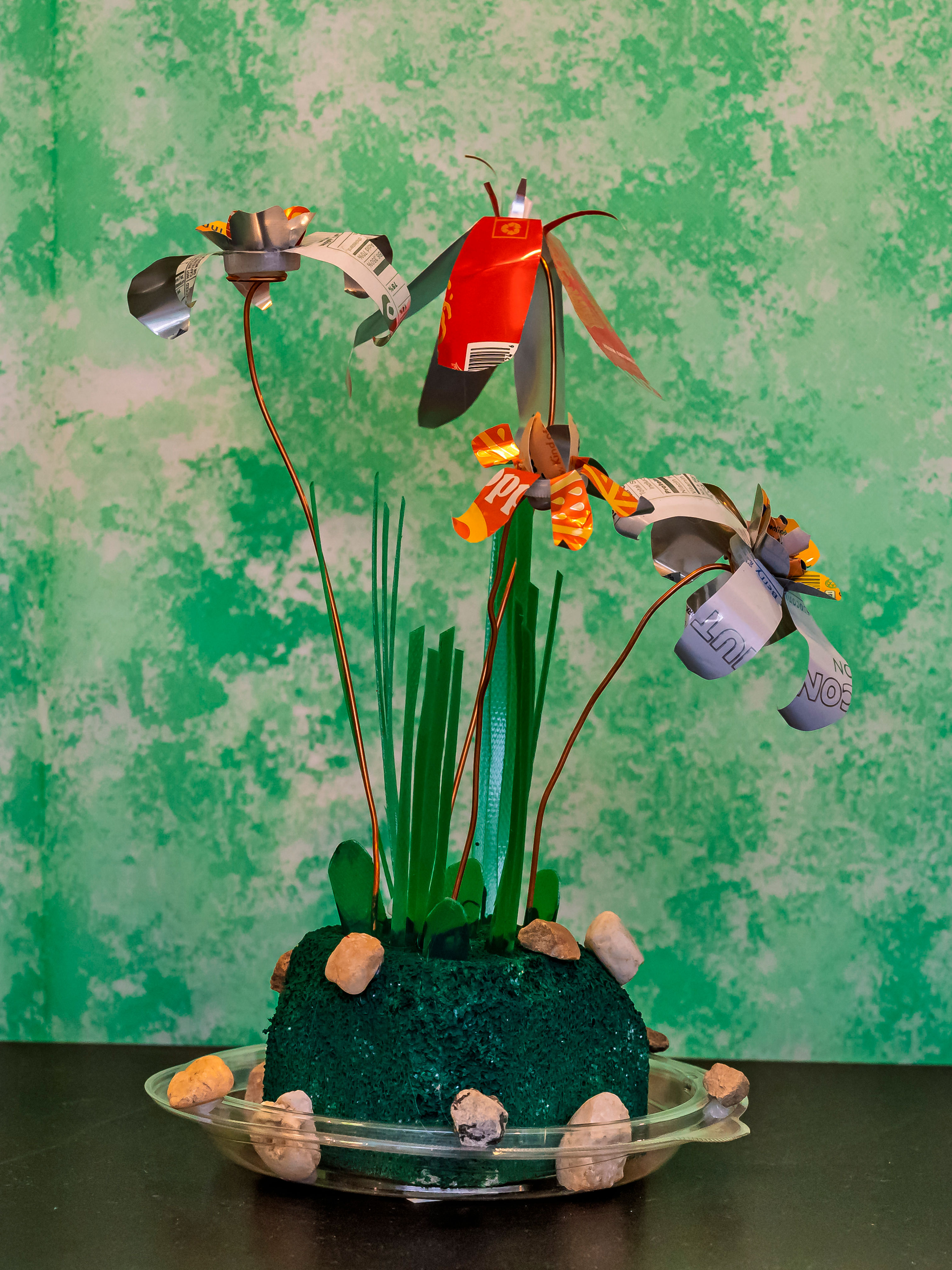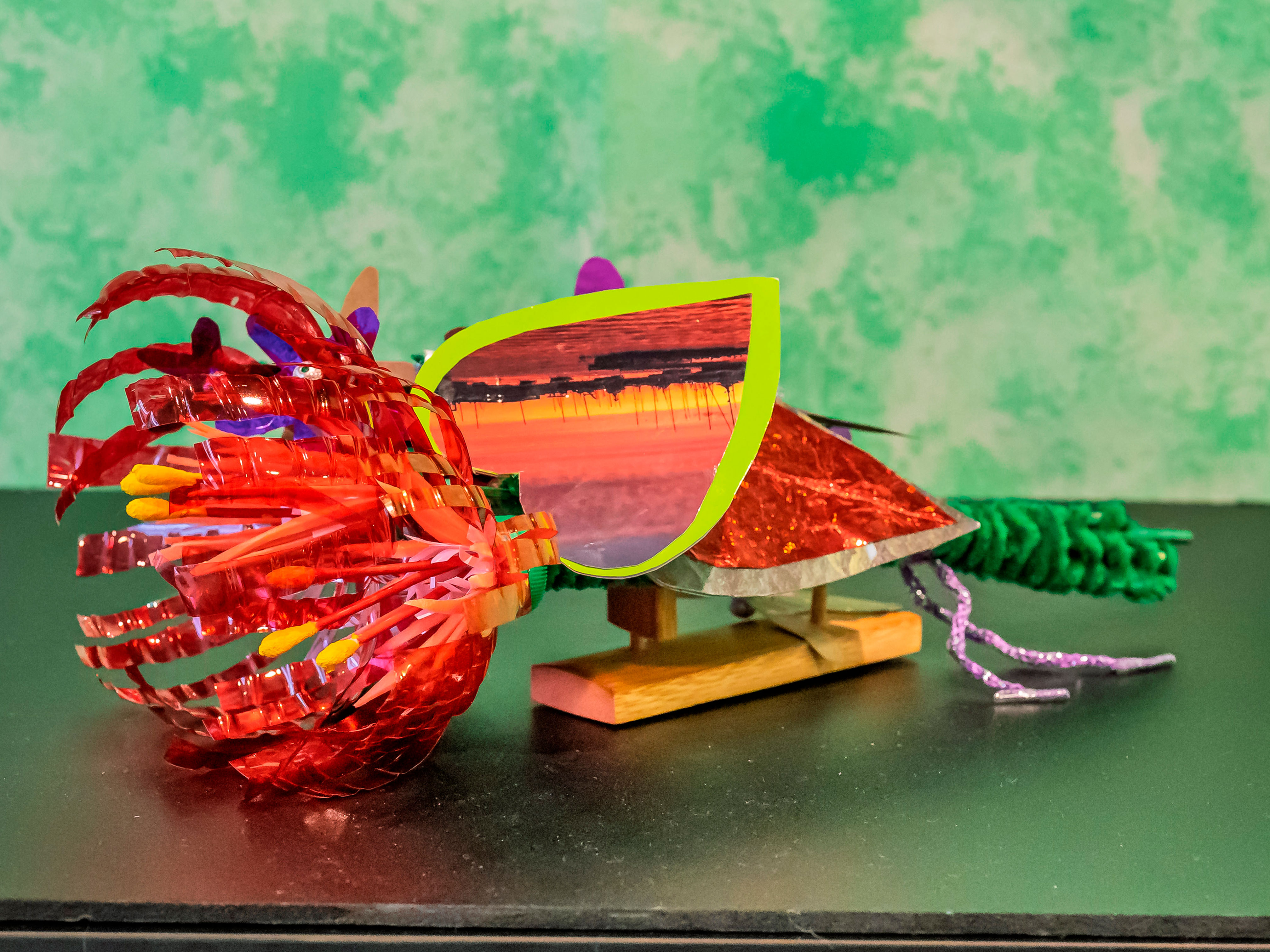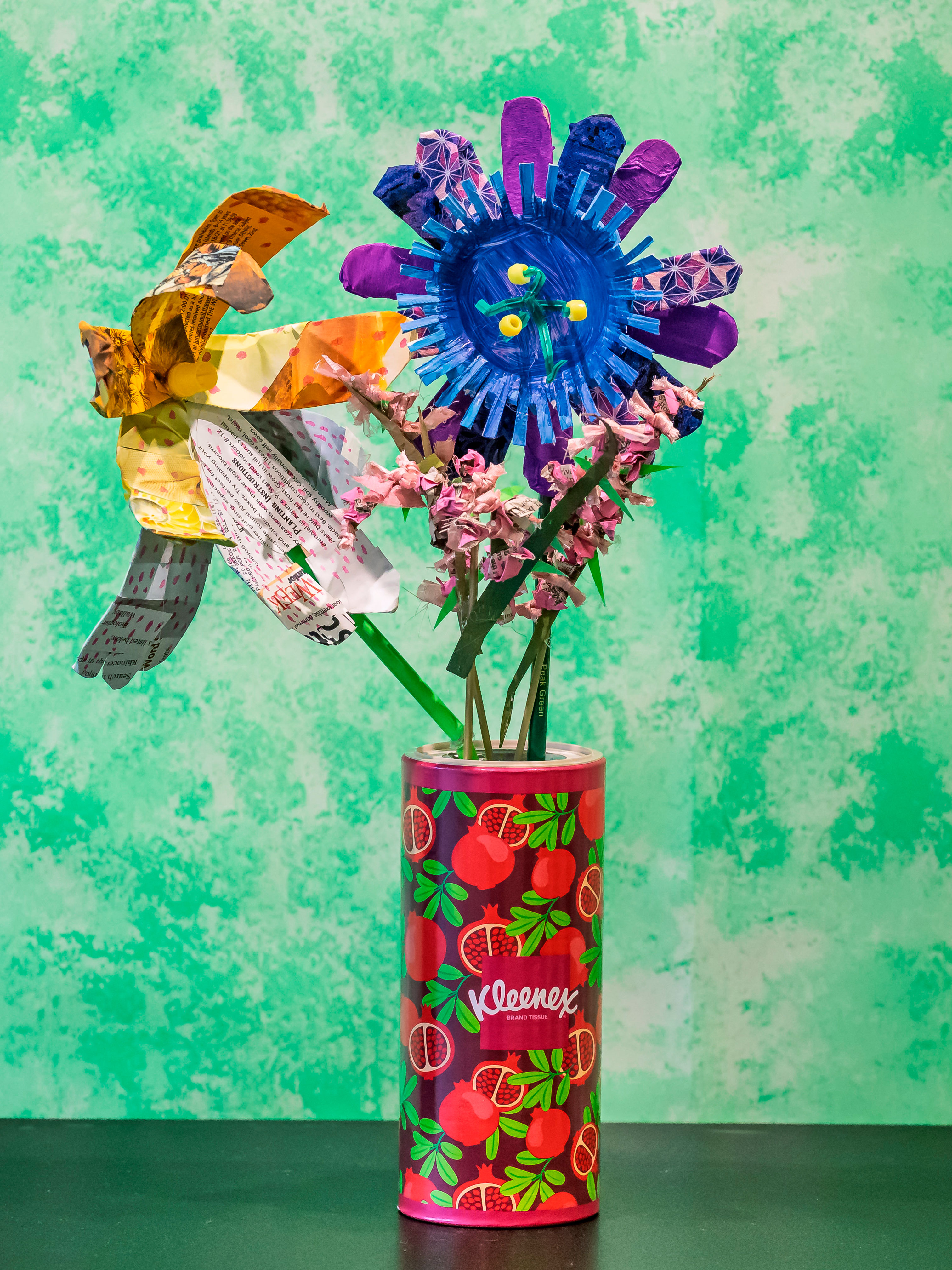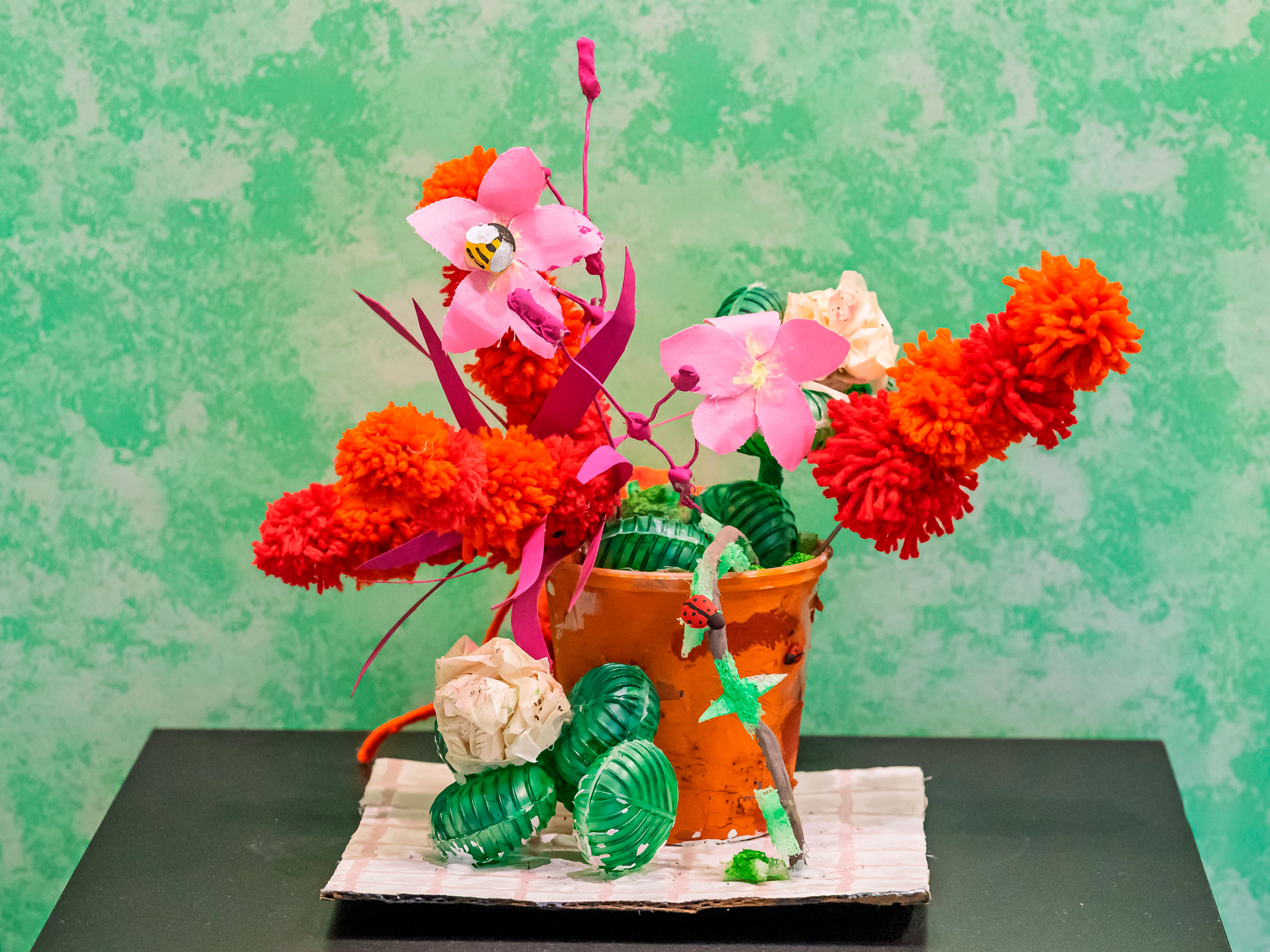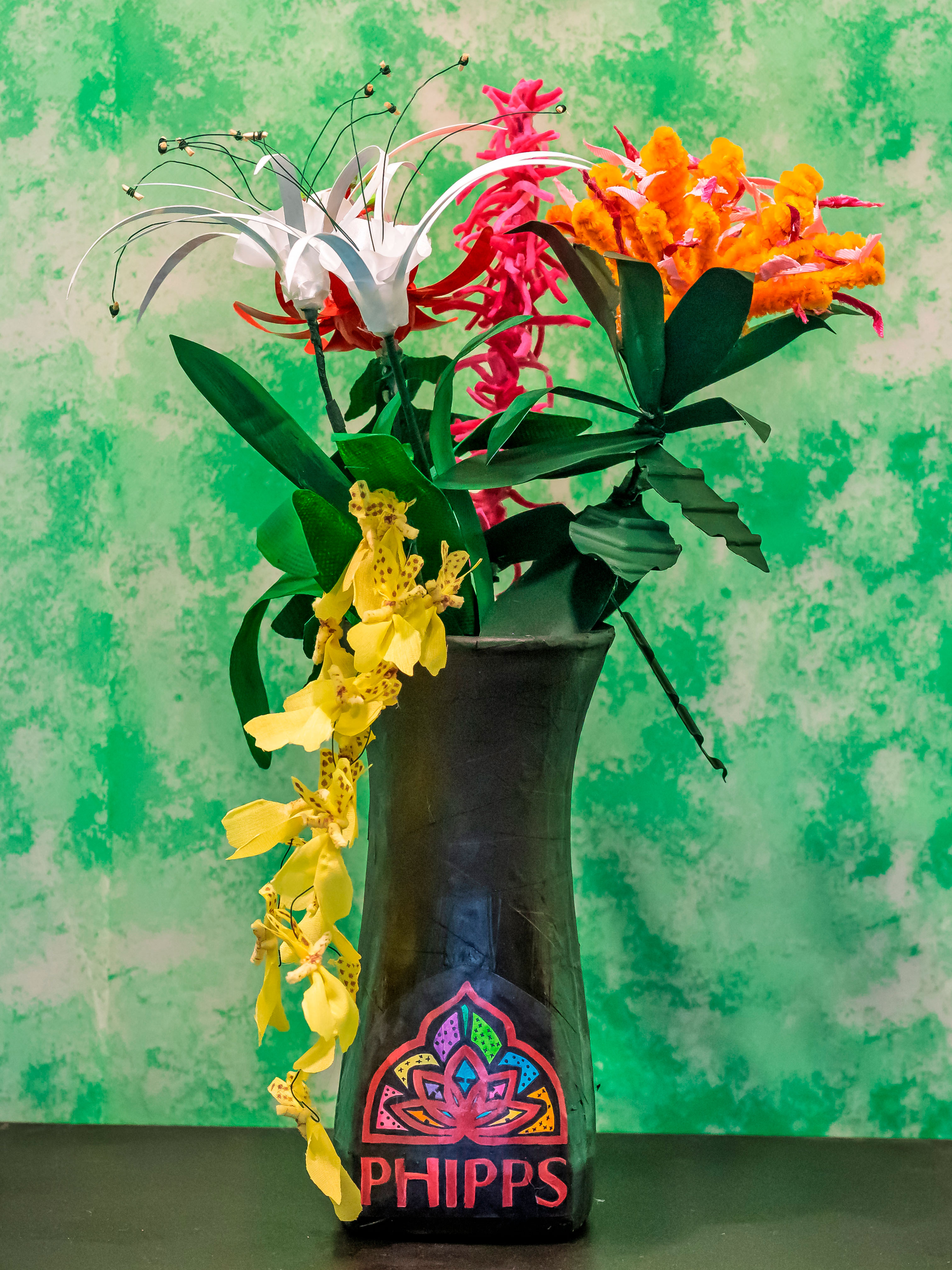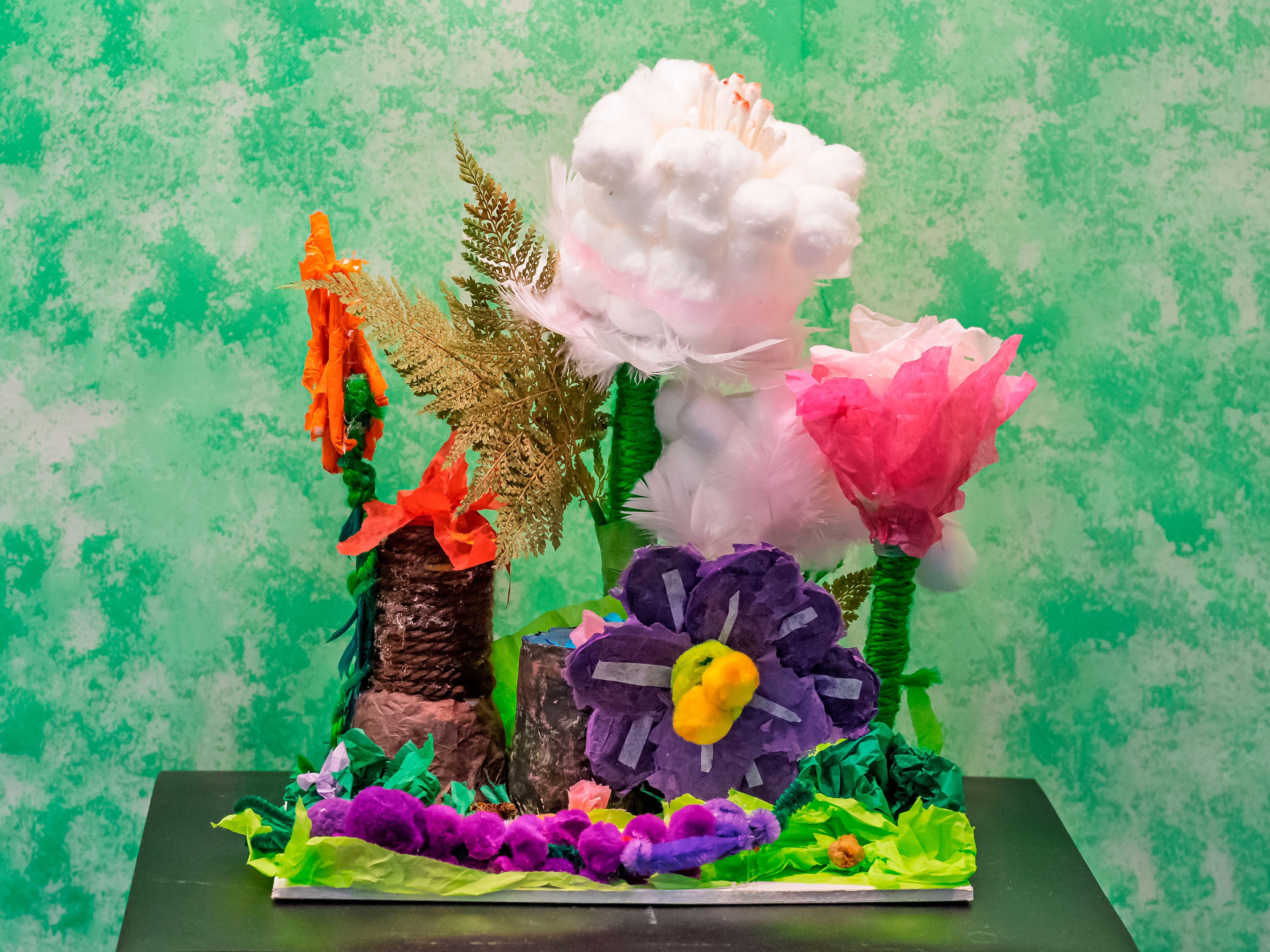Blog

Welcome to the Fairchild Challenge 5: Bountiful Bouquets
Recently, Phipps Conservatory transformed our Tropical Forest Hawaii exhibit into Tropical Forest Panama: Bridge to Biodiversity! Panama is home to an incredibly rich variety of plants due to it's diverse climates and ecosystems. In our final project in our Fairchild Challenge, local high school, middle school and elementary school students were asked to design and build sculptures that represent the fascinating world of Panama’s native plants while using creativity to make a meaningful and sustainable project.
Challenge 5 and D: Bountiful Bouquets: Blossoms of the Jungle, asked students to design and create a 3D sculpture of their very own “bouquet” made of at least three flowering plants that are endemic or native to Panama—meaning they are only found in or originated in this country, respectively. In their design, they were asked to consider each plant's special features and unique characteristics that would help them contribute to the environment, whether that be from supporting local wildlife to maintaining the balance of the ecosystem in Panama. All projects have been created entirely out of repurposed and recycled materials. The seven highest scoring projects will be on display in the Welcome Center Gallery throughout our Summer Flower Show: Jungle Quest!
Winners
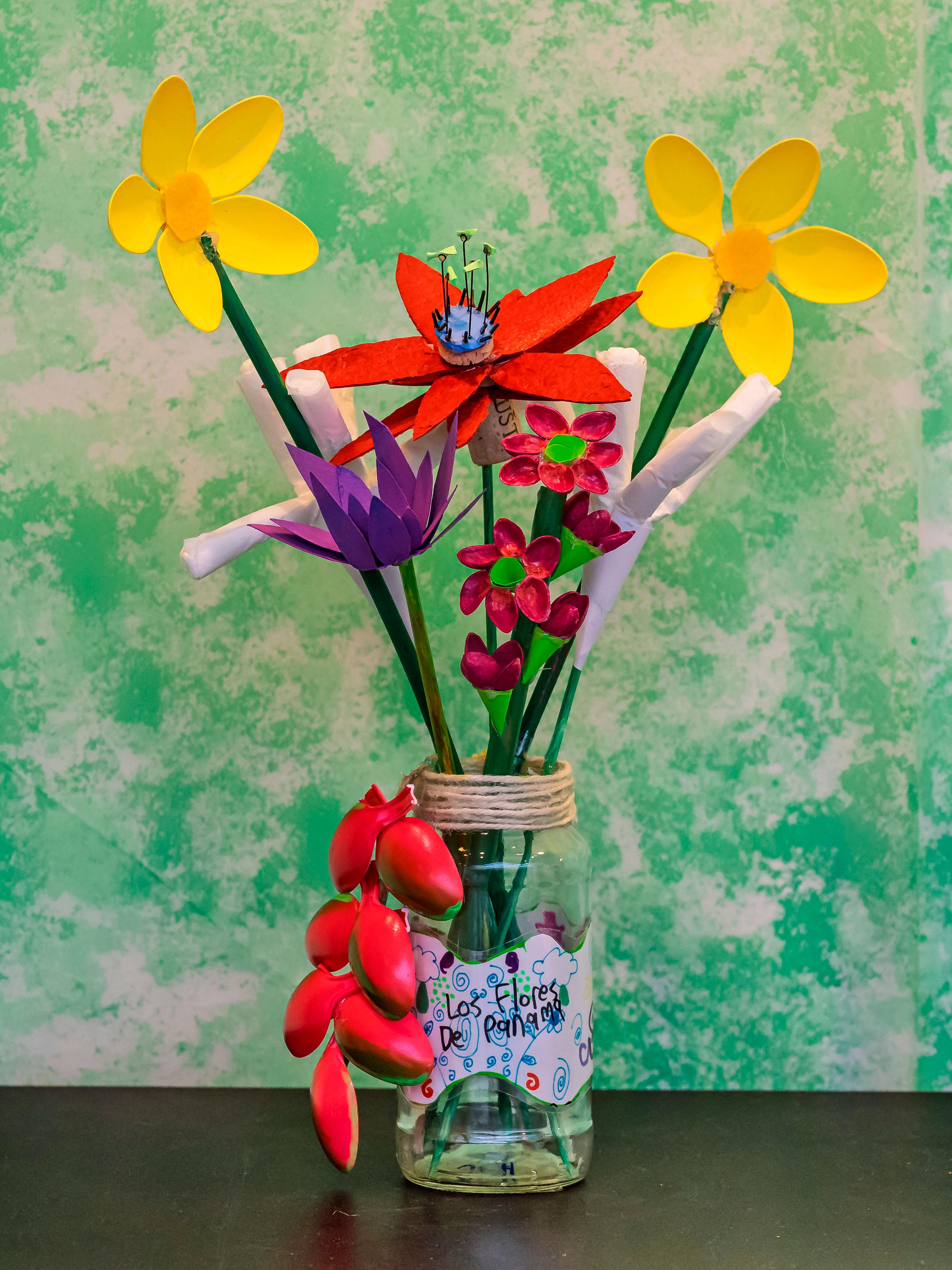
James Horvath
Grade 7, Fort Cherry Middle School
The design of James' bouquet sculpture highlights six tropical blooms that are commonly used within Panama's ecosystem. The Passiflora vitifolia otherwise known as the Crimson Passionflower was highlighted due to it's unique beauty, attraction to pollinators, growing edible fruits and herbal remedies. Next, is the Spanish Jasmine (Jasminum grandiflorum) which was noted for it's fragrant scent that people incorporate into soaps, perfumes and moisturizers. The Fragipani (Plumeria rubra) is a plant that highlighted for it's desirable fruity scent while providing herbal remedies for skin conditions. The Expanded Lobster Claw (Heliconia latispatha) with their unique shapes provide Panama's native birds with food and shelter. Allamanda cathartica was described as having several medicinal purposes such as laxatives, snake bite treatments and lice removal. Finally, the nymphaea plant was highlighted in this bouquet due to it's seeds that can be made into a starchy edible resource like flour that is rich in protein. Materials used to construct this sculpture include a glass jar, twin, plastic spoons, toilet paper, cardboard, pistachio shells, construction paper scraps and left over paint.
Lily Pompa
Grade 8, Wendover Middle School
The design of Lily's sculpture features three benefiticial blooms native to Panama.The Crimson Passion Flower (passiflora vitifolia) is featured for being a powerful pollinator in tropical rainforests. This plant provides fruit for native species and herbal medicines for the people of Panama. Sobralla Citrea is a rare orchid that requires cool growing conditions and rainforest protection in order to provide nectar for pollinators. Finally, the Tropical Milkweed (Asciepias curassavica), acts as a host plant for creatures like monarch butterflies, while at the same time being toxic if consumed by other animals. Materials used to construct this sculpture include a Celcius, Poppi, Liquid Death and Redbull cans, copper wire, a styrofoam packing block, a Panera salad lid, package straps and hot glue.
Benjamin Brown
Grade 4, Edgewood Elementary STEAM Academy
The design of Benjamin's Panama bouquet sculpture highlights three blooms and their fascinating areas of growth. First, is the Petra volubilis otherwise known as the queen's wreath, purple wreath or sandpaper vine which is commonly found in thickets and dry forest areas around the Panama Canal and the Darién province. Next is the Passiflora vitifolia, or Crimson Passionflower, which can be found in the understory or forest edge of lowland and foothill rainforests. Finally, the Caladium bicolor, notably referred to as Elephant Ears, are native to the tropical rainforests of Panama, but have been cultivated to tropical and subtropical areas around the world.
Grace Hebling
Grade 11, Shaler Area High School
The design of Grace’s sculpture is inspired by the passionflower (Passiflora foetida), brown heart (Andira inermis) and Wallis' orchid (Epidendrum wallisii) found within Panama's native landscapes. The passionflower (Passiflora foetida) was featured for it's widespread growth throughout the weedy and dry tropical forest areas of Panama where it serves as a host for several different species of butterfly larvae. Next the Andira inermis was created as apart of this bouquet due to it's ability to maintain a bloom for nine months out of the year. Due to the humidity conditions of Panama, this plant's medicinal application tcan be used to treat snake bites. Finally, the Wallis' orchid is a yellow-white flower which can be found widespread throughout Panama, typically in the foothill mountains around Cerritos Azul and Barro Colorado Island. Materials used to construct this sculpture include colored pencils, bamboo skewers, fabric, popsicle sticks, newspaper, a magazine, seed packets, pony beads, cupcake liner, Kleenex box, smencil container cap, ribbon, paint, garden wire, hot glue and pebbles.
Olivia Airgood, Avery Harrison, Everly Henderson, Emma Johnston, Meredith Lindsay, Mateus Morgueta, Mary Rhenish
Grade 7 and 8, Mars Area Middle School
The design for this sculpture showcases five plants native to Panama. These students first make note of the cycnoches orchid's unique ability to create blooms that can be male, female or occassionally even hemaphroditic forms. Next is the achiote (Bixa orellana) which is used as a food dye, medicines for diabetes and stomach related ailments. Following this, the students discuss the bijao (Calathea lutea), a distinctive plant that thrives in Panama's moist tropical forests which has it's leaves and roots used in local cuisine as well as a variety of herbal remedies. The prosthechea (Prosthechea cochleata), otherwise known as a clamshell orchid, grows in damp forests and was featured in this design for it's unique shape and the bloom's current endangered status in regions such as southern Florida. Finally, the fragipani (Plumeria rubra), which grows in the coastal regions of Panama, was highlighted for it's sweet scent that is used when making perfumes. The beautiful blooms can also be made into a different types of floral decorations. Materials used to construct this sculpture include yarn, cardboard, wire, hot glue, styrofoam. microwavable dumpling cups, plastic containers and other materials found in the school art room.
Piper Munyon
Grade 9, Gateway High School
The design of Piper's sculpture features five of Panama's most beneficial blooms. The Panama Queen (Asphelandra sinclairiana) is commonly found in moist tropical forests, has unique petals and vibrant colors and are attractive to pollinators and birds. The Odontinema tubaeforme can be found in the wet tropical biomes of Panama with bright "fire spiked" flowers that guide pollinators to it's nectar. Both the Hymenocallis littiralis and the Passiflora vitifolia grow in similar enviornmental conditions and were incoporated into this project for their ties to herbal and medicinal remedies. Finally, the Trichocentrum lacerum is an orchid flower and was featured in this bouquet due to it's being an epiphyte or a plant that grows on a host rather than in the soil. Materials used to construct this sculpture include paint brush bristles, a cat ball toy, metal coat hangers, toothpicks, red solo cups, plastic takeout containers, old paint tray, grandma's buttons, pipe cleaners, ribbons, recycled floral foam, wooden skewers, yarn, glass vase, green wire, plastic yogurt container, felt, piping tips, paint, hot glue, decoupage, fabric, floral tape and marker.
Kendall Fonzi, Jessica Li, Jane Lyons, Eleanor McCauley, Everly Northrop, Hannah Ziegler
Grade 4, Mars Area Elementary School
The design for this bouquet sculpture features at least one Panamanian bloom created by each student. The first bloom highlighted in this bouquet is the Crimison Passionflower (Passiflora vitifolia) which has red petals, brown stems and is located in the lowland and foothill areas. Also found in Panama is the Purple Foxglove (Digitalis purpurea), which has green stems and purple petals. Similarly, the Day Waterlily (Nyphmaea nouchali) has green stems, purple petals and a yellow center and is commonly found near ponds, lakes and slow moving rivers. The Holy Ghost Orchid (Peristeria elata) has a green stem and white flower and can be found within Panama's moist tropical forests. Next, the Pyrostegia venusta, which is typically native to Brazil and Paraguay but has been naturally spotted as far north as Mexico, has green stems and long, thin, curly orange petals. The Arachnothryx leucophylla is featured with it's notable green steps and bright pink flower petals.The final featured plant is the cyatheaceae. Unlike the others in this bouquet, this plant can be found in wet forests among lowland and mid-elevation areas of Panama.
